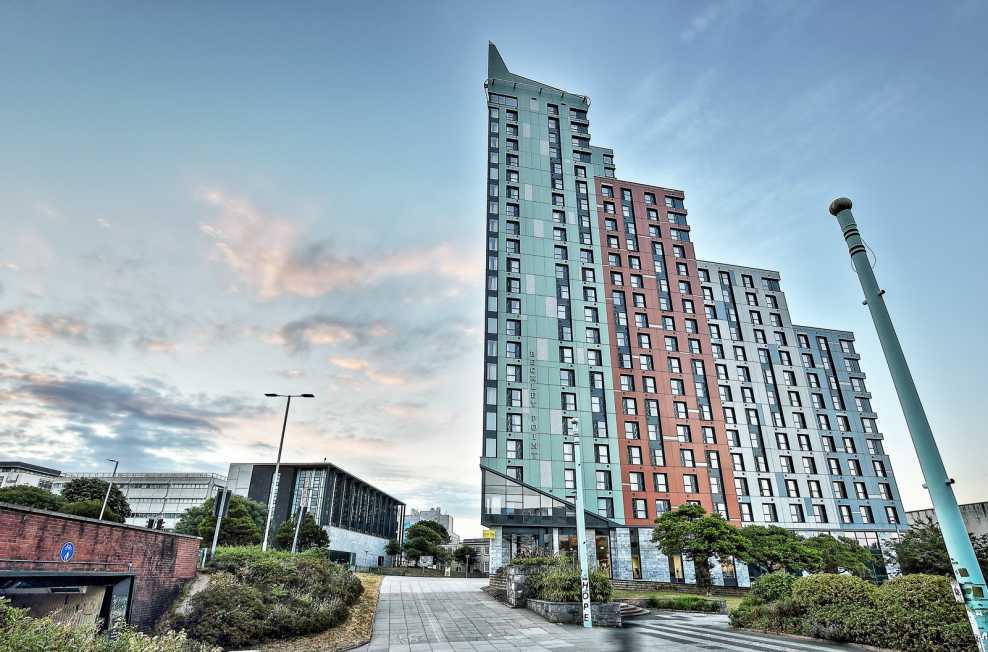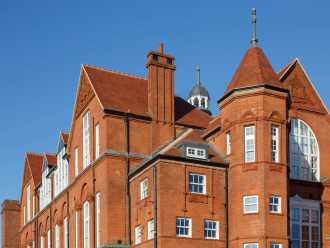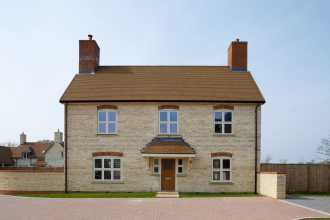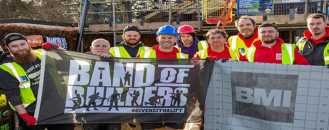Our country pages
Africa
Europe
Search
Order a sample
You can order up to 3 free sample tiles.
We'll aim to deliver your sample order within 5-7 working days from your order date.
BMI Crowns the Highest Building in the West Country

The Story
Providing up to 23 storeys of student accommodation, Beckley Point is not only the highest building in Plymouth, but also the whole of the West Country. Yet, according to the contractor Stormforce Roofing, this was not the only challenge it had to overcome in order to safely install the robust roofs required to withstand the harsh coastal climate. Designed and built by Kier Construction on behalf of The Student Housing Company, Beckley Point has more than 12 roof areas, all at different levels, from five floors to 23 floors high, with the highest having a steep pitch of 45o.
“All of the roofs needed to be started at different times and it meant that we were working on roofs in multiple areas while other trades were also working there,” comments Simon Kalas, the Director in charge of the project for Stormforce Roofing. It was challenging but essential for the project as due to the extreme height, the cost of getting back onto the different roofs once they were installed would be prohibitive. This factor was key when defining the roof specification: it had to be built with a highly durable product that would survive the extreme weather conditions, perform to specification and last for many many years.
“The specification for the roof went through several iterations from being fully bonded with ballast right the way through to the final specification of mechanically fixed felt,” he says. “It had to be the right system for the roofs and take into account that they would never be accessible without spending a lot of money – the scaffolding alone would be prohibitive. So whatever we installed would have to last 40 years.” This led to Stormforce Roofing developing a very highly engineered final specification using a BMI Icopal mechanically-fixed bituminous built-up roof (BUR) system, with a mineral cap sheet reinforced by adhesive bonding to the insulation beneath.
A further challenge was set in motion by current concerns regarding high-rise safety, which highlighted that the existing façade did not meet fire protection standards. This was removed but the new cladding was installed during the roofing works, so the detailing of the upstands had to be completed ahead of the main roof, reversing normal procedures.
“Upgrading the cladding meant that scaffolding and materials went on finished roofs and so we had to make good after,” adds Simon. This also meant that the project took far longer than the 10 weeks originally scheduled. Stormforce Roofing started work in December 2016 and finished in May 2018, with some of the blocks occupied by students during the build as they had booked their accommodation on the basis of the building having been completed by September 2017. The extended timescales had a knock-on effect for Stormforce Roofing, says Simon. “Installation was in winter during high winds and work could not continue when they became too strong. The high winds meant that when working on scaffold at extreme heights, all tools had to be tethered and we maintained a strict regime of making sure materials and fixings were kept in place.”
Total Torch Vapour Control Layer, an SBS-modified bituminous membrane reinforced with an extra strong polyester fleece, provided a temporary, weatherproof finish to the roof structure before the final waterproofing system was applied.
The roofs’ demanding requirements were met by a specification comprising of BMI Icopal Total Torch Vapour Control Layer, Thermazone Insulation and FireSmart® TorchSafeTM Mechanically Adhered (MA).
With the build-up needing to be able to stand up to the elements, individual product performance was very important. Thermazone Insulation boards, layered between the vapour control layer and the FireSmart® TorchSafeTM MA capsheet, provided a highly efficient PIR rigid insulation with a thermal conductivity as low as 0.024W/mK. BMI Icopal’s unique FireSmart® technology also provided a capsheet with a fire protection layer, which shields the roof from both spread of flame and fire penetration. Other materials employed included BMI Icopal Primer, FireSmart® Thermaweld Capsheet, Tecnatorch Sand and PU Glues.
“Working with the BMI specification meant that both Kier Construction and our team knew that the roof would withstand both the extreme winds and also the risk of fire,” Simon adds. “The weekly inspections from the BMI Specification Manager reassured everyone that the project was being carried out as per the specification and the 20-year guarantee also ticked the risk management box on these design and build contracts.” The seven-step BMI specification service ranges from consultation site surveys, and specification; leading to installation support and site inspections which ultimately conclude with industry-leading roof systems guarantees.
High-rise, coastal and other extreme environments need special solutions in terms of design, specification and high performance materials; not to mention the peace of mind provided by long-term guarantees. These were just some of the reasons why Stormforce Roofing chose to work with BMI UK & Ireland – and opted for its flat roof systems on the challenging conditions faced at Beckley Point.


